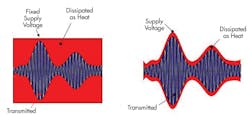It is true that the growth of 5G networks will mean greater bandwidth and network capacity for our homes and offices.
It is also true the technology opens the floodgates for future IIoT technologies—from intelligent workspaces, driverless vehicles and telemedicine, to cameras monitoring product quality on plant floors, to predictive analytics and real-time information transmissions from sensors and monitors embedded in cargo ship turbines.
Worldwide, 5G and LTE router/gateway markets are expected to grow to about $3.0 billion by 2024 from about $979.3 million in 2019, according to the International Data Corporation (IDC).
Here’s the thing: While the demand for connectivity—hyper-agility, faster speed, low latency—isn’t about to slow down, the rollout pace of 5G networks will continue to be gradual.
Industries cannot fully exploit the advantages promised by 5G just yet. That’s because we will need to fill the gaps in available technology (including on-premises radio access network equipment and 5G-compatible devices and integration with legacy networks and equipment) that could operate at the high frequencies required of 5G, explained Harish Krishnamoorthy, assistant professor of electrical and computer engineering at the University of Houston.
Successful adoption of 5G networks will require adapting software to support the demands. “But first, we need hardware that is fast enough and capable of supporting 5G,” said Krishnamoorthy. This is where his work at the university’s Power Electronics, Microgrids, and Subsea Electrical Systems Center (PEMSEC) comes into play.
Along with a team of researchers, Krishnamoorthy is developing a higher power 5G envelope tracking power supply that can operate with a bandwidth of 100 MHz or higher. Current envelope bandwidth in commercial applications is about 20 MHz for a peak power of greater than 65 watts, he explained. The higher bandwidth allows 5G systems to offer better speed, resolution and clarity.
Envelope tracking is a power supply modulation technique that continuously adjusts the converter voltage used by the radio frequency power amplifier. It is used to keep the power supply running at peak efficiency, said Krishnamoorthy.
Boosting both frequency and power at the same time is technically challenging, in part because of the excess heat produced, he noted. Envelope tracking adjusts the voltage applied to the radio frequency, reducing the amount of waste heat produced by the system despite the higher power output.
“What we do is help [power systems] operate in a slightly nonlinear mode, which will help to improve the efficiency to at least about 50% to 60%,” estimated Krishnamoorthy.
By comparison, 4G systems typically operate on established frequencies at lower peak power and at a lower bandwidth. One hundred MHz is a starting point for 5G, and Krishnamoorthy said getting to that point is hard with current technology. The goal is to exceed 100 MHz at close to 200 watts peak power. “We will need to advance power electronics to support that,” he said.
To this end, the Department of Defense has awarded PEMSEC a $1.7 million grant to design and build a system capable of supporting 5G infrastructure. The five-year project is a partnership between PEMSEC and New Edge Signal Solutions, an integrated designer and manufacturer of radio units for both the defense and commercial markets.
The work will proceed in steps, “through the use of better device technologies, paralleling power converters and including a smart error correction technique, without which we would be unable to achieve the efficiency as well as linearity targets of the project,” explained Krishnamoorthy.
Meanwhile, expect 4G networks to coexist with up-and-coming 5G deployments for many years. For now, Krishnamoorthy’s advice to enterprises is to think about how to rearchitect their IT infrastructure and consider deploying 5G services where its applications work better.
About the Author

Rehana Begg
Editor-in-Chief, Machine Design
As Machine Design’s content lead, Rehana Begg is tasked with elevating the voice of the design and multi-disciplinary engineer in the face of digital transformation and engineering innovation. Begg has more than 24 years of editorial experience and has spent the past decade in the trenches of industrial manufacturing, focusing on new technologies, manufacturing innovation and business. Her B2B career has taken her from corporate boardrooms to plant floors and underground mining stopes, covering everything from automation & IIoT, robotics, mechanical design and additive manufacturing to plant operations, maintenance, reliability and continuous improvement. Begg holds an MBA, a Master of Journalism degree, and a BA (Hons.) in Political Science. She is committed to lifelong learning and feeds her passion for innovation in publishing, transparent science and clear communication by attending relevant conferences and seminars/workshops.
Follow Rehana Begg via the following social media handles:
X: @rehanabegg
LinkedIn: @rehanabegg and @MachineDesign


